Rare Rides Icons: The History of Imperial, More Than Just a Car (Part XXII)

Today we reach the 22nd and final installment in the Imperial series. In our last edition, we reviewed the development and birth of the final production car to wear the Imperial name: The super-extended K-car platform known as the Y-body. Lee Iacocca was keen on the idea of a full-size luxury sedan for the elderly customer, but Chrysler had neither the resources nor the platform to do it properly. Thus the Y-body appeared, and its angular and pencil-thin shape went on sale in 1990 alongside the similarly lengthened Chrysler New Yorker Fifth Avenue. Speaking of angles, let’s talk about that sweet money-saving clip swap action.
The 1990 Imperial’s styling, like in decades before, started with the already festooned New Yorker and added additional layers of gingerbread trim. But Imperial also added some length to the bargain: It spanned 203 inches while the 1990 New Yorker Fifth Avenue was about 4.5 inches shorter, at 198.6 inches. Because the two cars shared a wheelbase and body panels, it meant the Imperial’s flagship status length was all made up of overhangs and additional trim.
For its part, the New Yorker Fifth Avenue wore largely the same styling as its smaller sibling. The New Yorker in turn was some additional trim on the basic box shape of the Dodge Dynasty. The group of sedans was almost a textbook definition of a conservative three-box. There were a lot of sharp angles, a very upright and formal greenhouse, and plenty of chrome trim. Hidden headlamps returned on the New Yorker for the first time since 1981. The rear end was punctuated by a thickly chromed bumper and two vertical tail lamps. The Fifth Avenue package came with a vinyl carriage roof around the C-pillar and rear window.
To this basis, the Imperial added much additional trim and length. Chrysler’s stylists turned to the ’81 to ’83 Imperial for inspiration and sought to bring the styling into the Nineties. They did so by designing a new front clip for the Imperial, which used the same hidden headlamp design as on the Fifth Avenue but added a swept-back waterfall grille into the bargain. The new grille on the Y-body Imperial was very similar to the thinly veined one found on the Eighties coupe. On the vinyl at the C-pillar and at the rear, the Imperial eagle returned after a hiatus that began in 1976.
Also carried over from the old Imperial were a set of driving lamps underneath the headlamps. They were wraparound in style and integrated into the front fascia. On the New Yorker, the running lamps were in the bumper instead. The Imperial’s bumper itself came to a point in the middle, a classic styling theme of the marque for decades. Corner markers were located largely where they were on the old Imperial but were now separate cornering lamps (white) and running lamps (amber).
The side profile of the new Imperial was not really comparable to the Eighties version, or indeed any of the Imperials before it. It was the same extra formal but general Chrysler look found on the Dynasty and New Yorker models. The Imperial script formerly found on the long front fender of the coupe migrated to the front door in 1990, as there wasn’t enough fender space behind the wheel to apply the lettering.
Side rub strips were body-colored and had little chrome ornamentation, though a chrome rocker panel strip spanned the lower edge of all examples. Unlike the Fifth Avenue, Imperial’s vinyl roof started at the B-pillar – which was more formal than at the C-pillar. It was implemented in the same way as on the New Yorker and used much chrome trim. The sporty snowflake alloy of the early Eighties Imperial was not revived, as all 1990 Imperials wore the same faux wire wheel covers. They were the same design as on the New Yorker, except they read “Imperial” in the middle.
Thick whitewalls were fitted as standard equipment because they were the most conservative option. The 1990 Imperial’s rear was treated to another clip swap, where again additional trim and length were added. The rear end treatment was again a callback to the 1981 Imperial’s looks, with a long horizontal tail lamp. The Fifth Avenue’s rear end was marked by a Chrysler Pentastar in the middle, and gold New Yorker script badging. Chrysler was written in block letters under the lower edge of the trunk lid.
On the Imperial, the Chrysler emblem was higher on the trunk and had the golden Imperial eagle within it. The rear badge wore a special wreathe to indicate its luxury status. The trunk read Chrysler on the left side in script, and Imperial was in block lettering in the center of the heckblende. The tail lamps were encased in a chrome trim strip, which was supplemented by some very thick chrome on the bumper.
The overall look on the Imperial was sharper and more formal and did stand out over the Fifth Avenue via its unusual tail lamp treatment. But there was another Chrysler vehicle with a formal rear end and a big heckblende: The basic C-body Dynasty. Uh oh.
The Imperial’s interior was part of the pricy model’s overall issue. It shared almost all components with the lesser New Yorker Fifth Avenue, and indeed the standard New Yorker and Dodge Dynasty. Whichever version a buyer chose, they sat inside the same overstuffed interior environment and faced the same airbag steering wheel found in every Chrysler product that year. The dash had little in common with the early Eighties Imperial, as time and safety regulation had forced styling forward.
There was an instrument cluster in front of the driver that included the gauges, climate control, stereo, and vents. All buttons were driver-oriented, and the instrumentation pod cut down sharply just past the climate and stereo buttons. To the left of the wheel in all versions were the light switches, and the small display panel that showed an overhead view of the car, and indicated if any doors were ajar (except Imperial, which removed that useful feature and had an Imperial eagle plaque instead). The front passenger in any of these cars was presented with a flat dash panel that had a strip of faux wood trim and a near-vertical glovebox. On Imperial vents were trimmed in chrome plastic, whereas on the Dynasty they were basic black.
The gauge clusters for Imperial and New Yorker Fifth Avenue were digital and provided onlookers a view of simulated gauges. Gauges reflected oil, fuel, voltage, and oil temperature, with a series of warning lights underneath. Imperial offered the most upmarket Infinity sound systems (CD optional) and used a single button directional equalizer rather than the multi-slider approach in the New Yorker Fifth Avenue.
Though cloth or leather were available on the other cars in the C- and Y-body lineup, the materials in the Imperial were stated to be of a higher quality. Cloth interiors on Imperial featured the more streamlined, less tufted seat design and were trimmed in Kimberley velvet like they were in 1983. Like the Mark Cross New Yorker Fifth Avenue, the Imperial’s most luxurious interior featured cow courtesy of the historical leather goods brand.
To differentiate it from the New Yorker Fifth Avenue’s Mark Cross interior option, the leather on the Imperial was of the same smooth design as the cloth interior. For button tufted and ruched goodness, one had to turn to the Fifth Avenue. That simpler seating in the Imperial seemed contrary to the car’s mission: To be as luxurious as possible. To that luxury end, an air suspension was an optional extra. It seems the system was fitted to most examples.
Other differentiation from lesser models came mostly via the aforementioned Imperial logos in a couple of places on the exterior and interior, as well as the Mark Cross lion’s head logo that was added to various bits of the wood trim inside. It was all very appealing to luxury car intenders, surely!
During Imperial’s debut year, Chrysler was experiencing plenty of problems with its new four-speed UltraDrive (as we learned recently). The advertising aimed to distract by hilarious comparisons of the Imperial to the finest cars Europe had to offer. Despite the high original price of $25,655 ($57,132 adj.) the Imperial moved 14,968 examples in 1990. However, that figure could be fairly compared to sales of the similar Cadillac DeVille that year: 134,155.
It turned out the initial year was a high-water mark for the Imperial, as sales fell to 11,601 in 1991. By that time, its price increased to $27,119 ($57,162 adj.), while ads touted the “automatic overdrive transaxle” instead of calling the UltraDrive by name. In 1992 yet fewer Imperials were sold, 7,643, as the price increased again to $28,453 ($58,454 adj.). The end couldn’t come soon enough for the Y-body, as the new cab-forward and revolutionary LH cars were on the horizon. Imperial had its last outing in 1993 (with LH cars already on sale), where 7,064 were sold at the highest-ever price for the generation: $29,481 ($58,655 adj.)
The following year, Chrysler enjoyed a wave of sedan sales for its LH -platform cars like the Dodge Intrepid, Eagle Vision, and Chrysler’s new sedan flagship the LHS. Imperial slumbered for a while but was renewed as a new potential top-tier luxury sedan in 2006. Chrysler debuted the Imperial concept at NAIAS that year, where it rode on a lengthened LX platform from the new Chrysler 300.
Quite enormous, the concept’s proportions were more Rolls-Royce Phantom than Chrysler 300. Styling went for a retro-future look with design throwbacks to the Exner imperials of the past (like in the lamps). The interior was free of B-pillar (though there was one outside), a feature unlikely to make production. The rest of the inside lounge area was filled with tons of burl wood, lots of brown and cream leather, and switchgear and screens that were impressive for part of 2006 and at no other point. The concept was powered by Chrysler’s ubiquitous Hemi 5.7-liter V8.
Hope for a new Imperial lasted for about a year. The hammer came down in July 2007, when Chrysler declared it was dropping any development of the new Imperial. The company blamed escalating fuel prices and fuel-economy regulation; there just wasn’t a justification for the development any longer. Your author speculates that the enormous Chrysler with a high five-figure price tag would have been a sales flop.
There hasn’t been mention to date of another Imperial, and Chrysler chose the Airflow name for its new luxury EV instead. Not so sure that 1920s name will resonate with the public. Next up on Rare Rides Icons we’ll drive over to Dearborn, and take a look at the Continental Marks. Until then.
[Images: Chrysler]

Interested in lots of cars and their various historical contexts. Started writing articles for TTAC in late 2016, when my first posts were QOTDs. From there I started a few new series like Rare Rides, Buy/Drive/Burn, Abandoned History, and most recently Rare Rides Icons. Operating from a home base in Cincinnati, Ohio, a relative auto journalist dead zone. Many of my articles are prompted by something I'll see on social media that sparks my interest and causes me to research. Finding articles and information from the early days of the internet and beyond that covers the little details lost to time: trim packages, color and wheel choices, interior fabrics. Beyond those, I'm fascinated by automotive industry experiments, both failures and successes. Lately I've taken an interest in AI, and generating "what if" type images for car models long dead. Reincarnating a modern Toyota Paseo, Lincoln Mark IX, or Isuzu Trooper through a text prompt is fun. Fun to post them on Twitter too, and watch people overreact. To that end, the social media I use most is Twitter, @CoreyLewis86. I also contribute pieces for Forbes Wheels and Forbes Home.
More by Corey Lewis
Latest Car Reviews
Read moreLatest Product Reviews
Read moreRecent Comments
- Bd2 Lexus is just a higher trim package Toyota. ^^
- Tassos ONLY consider CIvics or Corollas, in their segment. NO DAMNED Hyundais, Kias, Nissans or esp Mitsus. Not even a Pretend-BMW Mazda. They may look cute but they SUCK.I always recommend Corollas to friends of mine who are not auto enthusiasts, even tho I never owed one, and owned a Civic Hatch 5 speed 1992 for 25 years. MANY follow my advice and are VERY happy. ALmost all are women.friends who believe they are auto enthusiasts would not listen to me anyway, and would never buy a Toyota. They are damned fools, on both counts.
- Tassos since Oct 2016 I drive a 2007 E320 Bluetec and since April 2017 also a 2008 E320 Bluetec.Now I am in my summer palace deep in the Eurozone until end October and drive the 2008.Changing the considerable oils (10 quarts synthetic) twice cost me 80 and 70 euros. Same changes in the US on the 2007 cost me $219 at the dealers and $120 at Firestone.Changing the air filter cost 30 Euros, with labor, and there are two such filters (engine and cabin), and changing the fuel filter only 50 euros, while in the US they asked for... $400. You can safely bet I declined and told them what to do with their gold-plated filter. And when I changed it in Europe, I looked at the old one and it was clean as a whistle.A set of Continentals tires, installed etc, 300 EurosI can't remember anything else for the 2008. For the 2007, a brand new set of manual rec'd tires at Discount Tire with free rotations for life used up the $500 allowance the dealer gave me when I bought it (tires only had 5000 miles left on them then)So, as you can see, I spent less than even if I owned a Lexus instead, and probably less than all these poor devils here that brag about their alleged low cost Datsun-Mitsus and Hyundai-Kias.And that's THETRUTHABOUTCARS. My Cars,
- NJRide These are the Q1 Luxury division salesAudi 44,226Acura 30,373BMW 84,475Genesis 14,777Mercedes 66,000Lexus 78,471Infiniti 13,904Volvo 30,000*Tesla (maybe not luxury but relevant): 125,000?Lincoln 24,894Cadillac 35,451So Cadillac is now stuck as a second-tier player with names like Volvo. Even German 3rd wheel Audi is outselling them. Where to gain sales?Surprisingly a decline of Tesla could boost Cadillac EVs. Tesla sort of is now in the old Buick-Mercury upper middle of the market. If lets say the market stays the same, but another 15-20% leave Tesla I could see some going for a Caddy EV or hybrid, but is the division ready to meet them?In terms of the mainstream luxury brands, Lexus is probably a better benchmark than BMW. Lexus is basically doing a modern interpretation of what Cadillac/upscale Olds/Buick used to completely dominate. But Lexus' only downfall is the lack of emotion, something Cadillac at least used to be good at. The Escalade still has far more styling and brand ID than most of Lexus. So match Lexus' quality but out-do them on comfort and styling. Yes a lot of Lexus buyers may be Toyota or import loyal but there are a lot who are former GM buyers who would "come home" for a better product.In fact, that by and large is the Big 3's problem. In the 80s and 90s they would try to win back "import intenders" and this at least slowed the market share erosion. I feel like around 2000 they gave this up and resorted to a ton of gimmicks before the bankruptcies. So they have dropped from 66% to 37% of the market in a quarter century. Sure they have scaled down their presence and for the last 14 years preserved profit. But in the largest, most prosperous market in the world they are not leading. I mean who would think the Koreans could take almost 10% of the market? But they did because they built and structured products people wanted. (I also think the excess reliance on overseas assembly by the Big 3 hurts them vs more import brands building in US). But the domestics should really be at 60% of their home market and the fact that they are not speaks volumes. Cadillac should not be losing 2-1 to Lexus and BMW.
- Tassos Not my favorite Eldorados. Too much cowbell (fins), the gauges look poor for such an expensive car, the interior has too many shiny bits but does not scream "flagship luxury", and the white on red leather or whatever is rather loud for this car, while it might work in a Corvette. But do not despair, a couple more years and the exterior designs (at least) will sober up, the cowbells will be more discreet and the long, low and wide 60s designs are not far away. If only the interiors would be fit for the price point, and especially a few acres of real wood that also looked real.







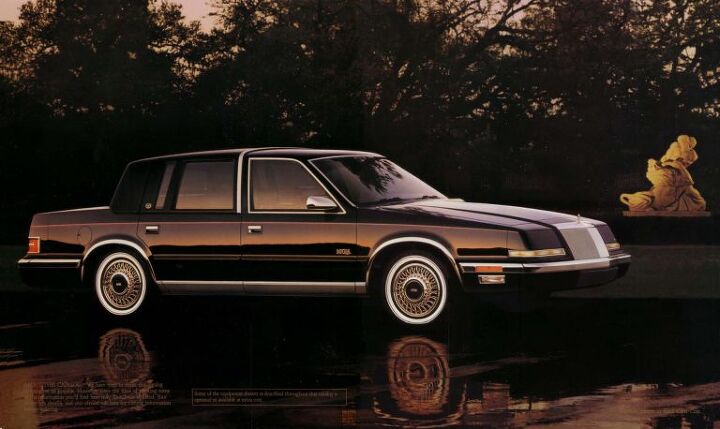
























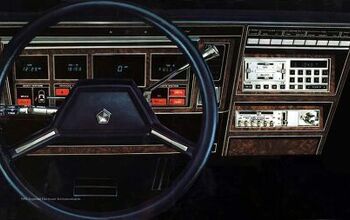
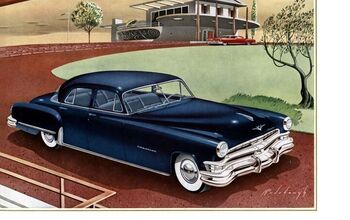
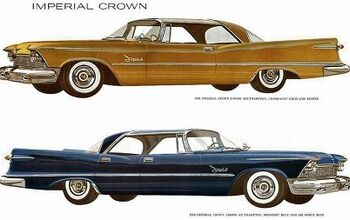

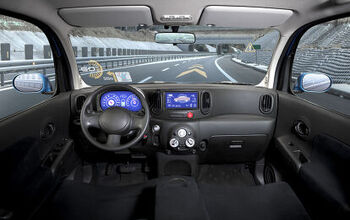








Comments
Join the conversation
Corey. 22 installments. Whoa. Good for you. Thank you for all the hard work. ( $60,000 for an Imperial? Self delusion. )
If the Imperial brand were to return, it would only be a question of how big an SUV it would appear on.